
Exploring the Kuyavian-Pomeranian Lake District: Poland's Hidden Gem
Discover the enchanting Kuyavian-Pomeranian Lake District in Poland, where nature, history, and culture create an unforgettable experience.
The Kuyavian-Pomeranian Lake District is a picturesque region in northern Poland. It is known for its stunning lakes, lush forests, and charming small towns. This area is perfect for nature lovers, history buffs, and anyone looking to escape the hustle and bustle of city life. One of the main attractions is Lake Gopło, one of Poland's largest lakes. It offers opportunities for boating, fishing, and swimming. Around the lake, you'll find many scenic trails for hiking and cycling. The nearby town of Kruszwica is home to the legendary Mouse Tower, a must-visit for history enthusiasts. Another highlight is the Bydgoszcz Canal, which connects the Brda and Noteć rivers. The canal's beautiful locks and bridges make it a popular spot for boat tours. In the heart of the district, Toruń, a UNESCO World Heritage site, boasts Gothic architecture and is famous for its gingerbread. Toruń's medieval old town is a great place to explore on foot, with its well-preserved buildings and vibrant atmosphere. The Kuyavian-Pomeranian Lake District is also an excellent destination for birdwatching. The region's diverse habitats attract many species of birds, making it a paradise for ornithologists. Additionally, the area is rich in folklore and traditions, offering visitors a chance to experience authentic Polish culture. Whether you're seeking outdoor adventures, historical exploration, or simply a peaceful retreat, the Kuyavian-Pomeranian Lake District has something to offer everyone.
Local tips in Kuyavian-Pomeranian Lake District
- Visit during the summer months for the best weather and outdoor activities.
- Rent a bike to explore the scenic trails around the lakes.
- Try the local gingerbread in Toruń, a city famous for its delicious treats.
- Bring binoculars for birdwatching in the diverse habitats of the region.
- Take a boat tour on the Bydgoszcz Canal to see the beautiful locks and bridges.
- Learn about local legends and history at the Mouse Tower in Kruszwica.
Exploring the Kuyavian-Pomeranian Lake District: Poland's Hidden Gem
The Kuyavian-Pomeranian Lake District is a picturesque region in northern Poland. It is known for its stunning lakes, lush forests, and charming small towns. This area is perfect for nature lovers, history buffs, and anyone looking to escape the hustle and bustle of city life. One of the main attractions is Lake Gopło, one of Poland's largest lakes. It offers opportunities for boating, fishing, and swimming. Around the lake, you'll find many scenic trails for hiking and cycling. The nearby town of Kruszwica is home to the legendary Mouse Tower, a must-visit for history enthusiasts. Another highlight is the Bydgoszcz Canal, which connects the Brda and Noteć rivers. The canal's beautiful locks and bridges make it a popular spot for boat tours. In the heart of the district, Toruń, a UNESCO World Heritage site, boasts Gothic architecture and is famous for its gingerbread. Toruń's medieval old town is a great place to explore on foot, with its well-preserved buildings and vibrant atmosphere. The Kuyavian-Pomeranian Lake District is also an excellent destination for birdwatching. The region's diverse habitats attract many species of birds, making it a paradise for ornithologists. Additionally, the area is rich in folklore and traditions, offering visitors a chance to experience authentic Polish culture. Whether you're seeking outdoor adventures, historical exploration, or simply a peaceful retreat, the Kuyavian-Pomeranian Lake District has something to offer everyone.
When is the best time to go to Kuyavian-Pomeranian Lake District?
Iconic landmarks you can’t miss
Invisible House
Explore the stunning Invisible House in Toruń, a captivating blend of modern architecture and historical charm that promises a unique experience for every visitor.

Mosty w Kiepojciach
Explore Mosty w Kiepojciach: A stunning tourist attraction with picturesque bridges, rich culture, and breathtaking natural beauty in the heart of Poland.

Pomeranian Lakeland
Discover the serene beauty of Pomeranian Lakeland, a stunning lake region in Poland ideal for nature lovers and outdoor enthusiasts.

Unmissable attractions to see
Malbork Castle
Explore Malbork Castle, a UNESCO World Heritage site and the largest castle in the world, where history and architecture come alive in stunning medieval splendor.

Wały Chrobrego
Discover Wały Chrobrego, Szczecin's historic waterfront promenade, blending rich history, stunning architecture, and breathtaking river views in Poland.
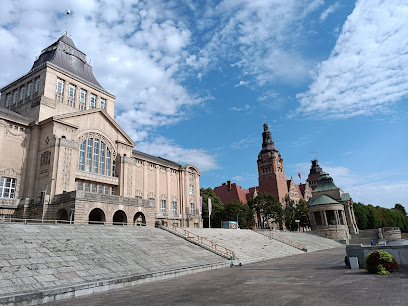
Słowiński National Park
Discover the enchanting beauty of Słowiński National Park, a unique blend of shifting sand dunes, serene lakes, and vibrant forests in Poland.
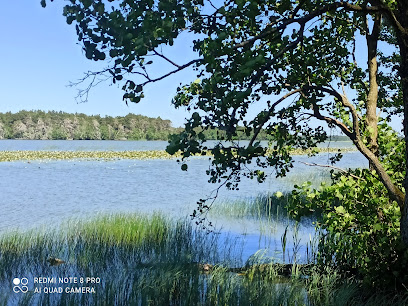
Wydma Łącka
Explore the stunning sand dunes and hiking trails of Wydma Łącka, a natural gem in Łeba, Poland, perfect for outdoor enthusiasts and nature lovers alike.

House of Nicolaus Copernicus
Discover the life and legacy of Nicolaus Copernicus at his historic birthplace, a captivating museum in the heart of Toruń.

City Park
Explore the natural beauty and vibrant atmosphere of City Park in Toruń, a perfect destination for relaxation and outdoor activities.

Invisible House
Explore the Invisible House in Toruń - a unique architectural marvel that blends art and nature in an immersive experience.

Park. Casimir the Great
Explore the natural beauty of Park Casimir the Great in Bydgoszcz, a tranquil green oasis perfect for relaxation and recreation.

Pomeranian Lakeland
Explore the stunning Pomeranian Lakeland, a serene natural retreat in Poland with crystal-clear lakes, lush forests, and endless outdoor adventures.

Gopło Landscape Park
Explore the natural beauty of Gopło Landscape Park, a tranquil escape with stunning landscapes, diverse wildlife, and outdoor adventures in Poland.
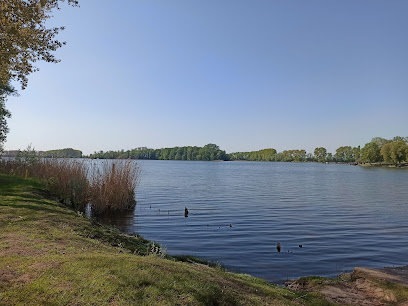
Essential places to dine
Pierogarnia Stary Toruń
Experience authentic Polish dumplings at Pierogarnia Stary Toruń in the historic heart of Poland's medieval jewel.

COLUMBUS Tavern Ustka - Restaurant
Experience the best of Polish cuisine and fresh seafood at COLUMBUS Tavern in Ustka – where every meal is a celebration by the sea.
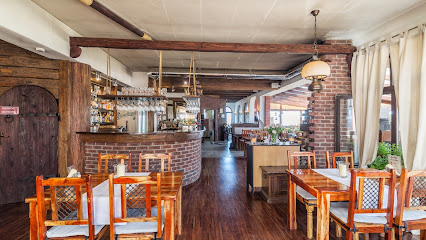
Fishka-fishka
Discover the best seafood experience at Fishka-fishka in Kołobrzeg - fresh flavors and warm hospitality await you!
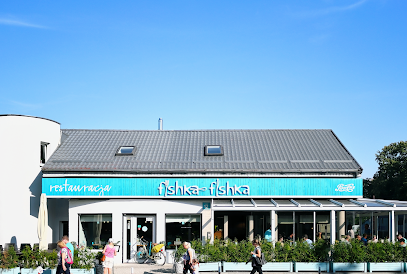
ORZO Poznań
Experience delicious vegan and vegetarian cuisine at ORZO Poznań - where every meal is crafted with care in the heart of Stare Miasto.

Mar-Hub
Experience authentic Polish cuisine with fresh seafood delights at Mar-Hub in Ustka's charming coastal atmosphere.

Restauracja Rynek 95
Experience authentic Polish cuisine at Restauracja Rynek 95 in Poznań's historic Old Market Square.

Restauracja Karramba Bydgoszcz
Discover the culinary delights of Restauracja Karramba in Bydgoszcz with its diverse menu featuring pizza, seafood, steaks and live music ambiance.

Restauracja Luizjana Bydgoszcz
Experience authentic Southern flavors at Restauracja Luizjana in Bydgoszcz – where Cajun meets Creole in a delightful dining adventure.

Laguna Marine Food & Drink
Experience exquisite pizzas and local flavors at Laguna Marine Food & Drink in Ustka – a perfect culinary escape by the sea.

Dolce vita
Experience authentic Italian flavors at Dolce Vita in Międzyzdroje - where every meal is a celebration of taste and ambiance.

Restauracja i Apartamenty Katarynka
Experience authentic Polish cuisine in a warm and inviting atmosphere at Restauracja i Apartamenty Katarynka in Bydgoszcz.

Tawerna Portowa Restauracja Ustka
Experience authentic Polish cuisine at Tawerna Portowa in Ustka – where fresh seafood meets stunning harbor views.

Zero7
Discover culinary excellence at Zero7 in Pobierowo – where local flavors meet exceptional dining experiences.

King Fu Fusion
Discover the art of sushi at King Fu Fusion in Bydgoszcz – where traditional flavors meet modern innovation in an elegant setting.

Zajazd Tama Brodzka
Discover authentic Polish cuisine and delicious pizzas at Zajazd Tama Brodzka in Brodnica – where every bite tells a story.

Markets, malls and hidden boutiques
Galeria Krakowska
Experience the ultimate shopping adventure at Galeria Krakowska, Kraków's vibrant shopping mall featuring diverse stores, dining, and entertainment.

Posnania
Discover the ultimate shopping experience at Posnania, Poznań's premier mall featuring shops, dining, and entertainment for everyone.

Westfield Mokotów
Explore Westfield Mokotów, Warsaw's ultimate shopping and dining destination with a mix of luxury, variety, and entertainment.

Avenida Poznań
Discover the vibrant shopping experience at Avenida Poznań, where fashion meets entertainment in the heart of Poznań, Poland.

Galeria Bałtycka
Explore Galeria Bałtycka in Gdańsk - A shopping paradise with diverse stores, delightful dining, and a vibrant atmosphere for all visitors.

Poznań Plaza
Explore Poznań Plaza: A shopping haven offering fashion, food, and fun in the heart of Poznań.

Galeria Pestka
Explore Galeria Pestka, Poznań's bustling shopping mall, where retail therapy meets delightful dining and entertainment for all ages.

Forum Gdańsk
Explore Forum Gdańsk: A shopping mall blending modern design, diverse shopping, and delightful dining experiences in the heart of Gdańsk.

House of Nicolaus Copernicus
Visit the House of Nicolaus Copernicus in Toruń, where science meets history in a captivating museum experience.
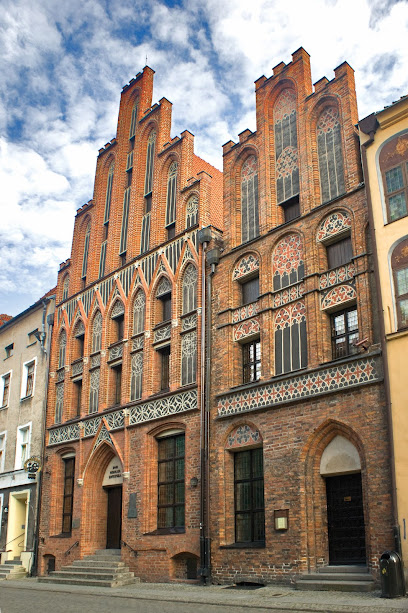
Park Narodowy Bory Tucholskie
Explore the enchanting landscapes and rich biodiversity of Park Narodowy Bory Tucholskie, a must-visit national park in Poland for nature lovers.

Invisible House
Explore the Invisible House in Toruń, a stunning architectural wonder that blends seamlessly with its surroundings, showcasing innovative design and immersive experiences.

Market Hall
Discover the lively Market Hall in Kraków, a vibrant farmers' market bursting with fresh produce, local delicacies, and handcrafted treasures.

CCC
Discover the latest in footwear and handbag fashion at CCC in Brodnica, where style meets quality in every step.

sinsay
Explore Sinsay in Brodnica for trendy fashion at affordable prices, offering a unique blend of style and comfort for every fashionista.

Pepco
Explore Pepco in Brodnica for trendy children's clothing and delightful toys at affordable prices, perfect for families and savvy shoppers.
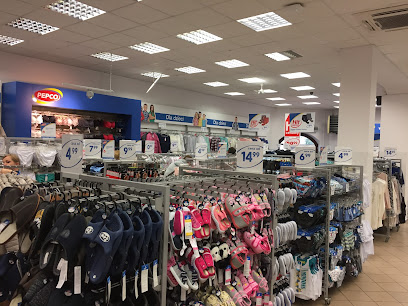
Essential bars & hidden hideouts
Pub Red Light
Discover the best of Gdańsk's brewing culture at Pub Red Light, where craft beer meets lively ambiance in the heart of the city.

Absurdalna
Discover Absurdalna, the vibrant brewpub in Katowice known for its craft beers and delightful atmosphere, perfect for tourists and locals alike.

Piwoteka Narodowa Craft Beer & Food
Discover Piwoteka Narodowa in Łódź, a premier gastropub celebrated for its extensive craft beer selection and mouthwatering culinary delights.

Flisak '76
Discover the vibrant cocktail culture at Flisak '76 in Gdańsk, where unique flavors and a welcoming atmosphere await every visitor.

Wodka Bar
Discover the rich culture of vodka in Kraków at Wodka Bar, where tradition meets a cozy atmosphere and an extensive selection.

Coffee & Whisky House
Discover the perfect blend of aromatic coffee and fine whisky at Coffee & Whisky House in Toruń's Medieval Town.

Harris Piano Jazz Bar
Discover the enchanting Harris Piano Jazz Bar in Kraków, where live jazz meets exquisite Italian cuisine in a captivating atmosphere.

Mercy Brown Cocktails Jazz & Burlesque
Discover the vibrant fusion of cocktails, jazz, and burlesque at Mercy Brown, a premier nightlife destination in Kraków.

Trzcina cocktail bar
Discover the vibrant atmosphere and exquisite cocktails at Trzcina Cocktail Bar, a must-visit destination in the heart of Kraków.

Mała Sztuka Cocktail Bar - Gdańsk Śródmieście
Experience the unique cocktails and vibrant atmosphere at Mała Sztuka Cocktail Bar in Gdańsk – a must for every cocktail lover.

Movida | Cocktail Bar
Discover the vibrant nightlife at Movida Cocktail Bar in Kraków, offering expertly crafted cocktails and a lively atmosphere for an unforgettable evening.

Woda Ognista
Experience the vibrant cocktail culture and Polish flavors at Woda Ognista, a must-visit bar in the heart of Warsaw.

Pub Mentzen
Discover the essence of Polish craft beer at Pub Mentzen in Toruń, a brewpub offering a cozy atmosphere and delicious local flavors.
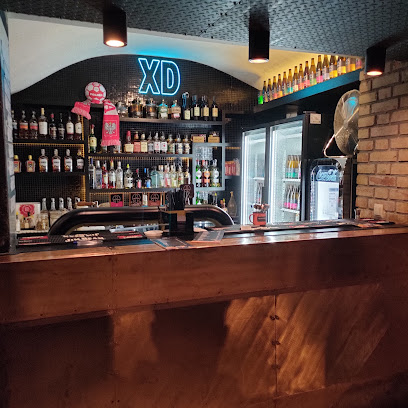
Graciarnia
Explore the vibrant brew culture at Graciarnia in Gdańsk, where craft beers and board games create a unique social experience.

Loreta Bar
Discover the vibrant atmosphere of Loreta Bar, a stylish lounge in Warsaw offering exquisite drinks and a perfect spot to unwind.

Local Phrases about Kuyavian-Pomeranian Lake District
-
- HelloCześć
[Chesht] - GoodbyeDo widzenia
[Do veed-ze-nya] - YesTak
[Tak] - NoNie
[Nyeh] - Please/You're welcomeProszę
[Pro-sheh] - Thank youDziękuję
[Jen-koo-yeh] - Excuse me/SorryPrzepraszam
[Pzhe-pra-sham] - How are you?Jak się masz?
[Yak sheh-mash] - Fine. And you?Dobrze. A ty?
[Doh-bzheh. Ah tee] - Do you speak English?Czy mówisz po angielsku?
[Chih moo-vish poh ahn-gee-el-skoo] - I don't understandNie rozumiem
[Nyeh roh-zoo-myem]
- HelloCześć
-
- I'd like to see the menu, pleaseChciałbym zobaczyć menu, proszę
[H-chyahwb zoh-bah-chich menu, pro-sheh] - I don't eat meatNie jem mięsa
[Nyeh yem myen-sah] - Cheers!Na zdrowie!
[Nah zdrov-yeh] - I would like to pay, pleaseChciałbym zapłacić, proszę
[H-chyahwb zah-plah-cheech, pro-sheh]
- I'd like to see the menu, pleaseChciałbym zobaczyć menu, proszę
-
- Help!Pomocy!
[Poh-moh-tsi] - Go away!Idź sobie!
[Eedzh soh-byeh] - Call the Police!Zadzwoń po policję!
[Zahdz-vohn poh po-leet-syeh] - Call a doctor!Zadzwoń po lekarza!
[Zahdz-vohn poh leh-kah-zah] - I'm lostZgubiłem się
[Zgoo-bee-wem sheh] - I'm illJestem chory
[Yes-tem kho-ri]
- Help!Pomocy!
-
- I'd like to buy...Chciałbym kupić...
[H-chyahwb koo-peech] - I'm just lookingTylko się rozglądam
[T-ool-koh sheh rohz-gwah-dahm] - How much is it?Ile to kosztuje?
[Ee-leh toh kohs-too-yeh] - That's too expensiveTo jest za drogie
[Toh yest zah droh-gyeh] - Can you lower the price?Czy możesz obniżyć cenę?
[Chih moo-zhes ob-nee-zh-oo chen-eh]
- I'd like to buy...Chciałbym kupić...
-
- What time is it?Która jest godzina?
[Ktoo-rah yest goh-dzee-nah] - It's one o'clockJest pierwsza
[Yes-pyeh-roov-zhah] - Half past (10)Pół do (10)
[Poo daw] - MorningRano
[Rah-no] - AfternoonPopołudnie
[Poh-poo-wood-nyeh] - EveningWieczór
[Vee-eh-choor] - YesterdayWczoraj
[V-chaw-rye] - TodayDziś
[Jee-sh] - TomorrowJutro
[Yoo-tro] - 1Jeden
[Yeh-den] - 2Dwa
[Dvah] - 3Trzy
[Tshee] - 4Cztery
[Ch-ter-ry] - 5Pięć
[Pyehnch] - 6Sześć
[Szeshch] - 7Siedem
[Shed-em] - 8Osiem
[O-shem] - 9Dziewięć
[Jev-yen-ch] - 10Dziesięć
[Jeh-syench]
- What time is it?Która jest godzina?
-
- Where's a/the...?Gdzie jest...?
[Gdzhe yest] - What's the address?Jaki jest adres?
[Yah-kee yest ah-dresh] - Can you show me (on the map)?Czy możesz mi pokazać (na mapie)?
[Chih moo-zhes mee poh-kah-zahch (nah mah-pee-eh)] - When's the next (bus)?Kiedy jest następny (autobus)?
[Kyeh-dy yest nah-step-ny (ow-toh-boos)] - A ticket (to ....)Bilet (do ...)
[Bee-let (daw)]
- Where's a/the...?Gdzie jest...?
History of Kuyavian-Pomeranian Lake District
-
The Kuyavian-Pomeranian Lake District has been inhabited since prehistoric times. Archaeological findings suggest that early human settlements date back to the Paleolithic era. The region's numerous lakes and fertile lands made it an ideal location for early agricultural societies. Artifacts such as stone tools, pottery, and ancient burial sites provide a glimpse into the life of early settlers in this area.
-
During the medieval period, the Kuyavian-Pomeranian Lake District witnessed significant historical events, including the arrival of the Teutonic Knights in the 13th century. The Knights built numerous castles and fortifications to protect their territories. Notable examples include the castles in Toruń and Golub-Dobrzyń. The Teutonic Knights played a crucial role in the region's development, influencing its architecture, culture, and political landscape.
-
One of the most significant historical events related to the Kuyavian-Pomeranian Lake District is the Battle of Grunwald, which took place on July 15, 1410. Although the battle occurred slightly outside the modern boundaries of the district, it had a profound impact on the region. The Polish-Lithuanian alliance decisively defeated the Teutonic Knights, weakening their influence and altering the power dynamics in the area.
-
The Renaissance period marked a golden age for the city of Toruń, located within the Kuyavian-Pomeranian Lake District. Toruń became a significant center of trade, science, and culture. It is also the birthplace of the famous astronomer Nicolaus Copernicus. The city's well-preserved medieval architecture, including the Old Town and Gothic churches, reflects its historical prosperity and cultural importance during this era.
-
In the late 18th century, the Kuyavian-Pomeranian Lake District, like much of Poland, experienced the partitions that divided the country among Prussia, Russia, and Austria. The region came under Prussian rule, leading to significant changes in administration, economy, and culture. The Prussian influence is still visible in the architecture and urban planning of many towns and cities within the district.
-
The Kuyavian-Pomeranian Lake District was deeply affected by both World War I and World War II. During World War I, the region saw military activity and suffered from economic hardships. In the interwar period, the district became part of the Second Polish Republic, experiencing a period of rebuilding and development. World War II brought devastation, with many towns and villages facing destruction and occupation by German forces.
-
After World War II, the Kuyavian-Pomeranian Lake District underwent significant reconstruction and development. The region became part of the People's Republic of Poland, and efforts were made to rebuild infrastructure and revive cultural heritage. Today, the district is a vibrant area known for its natural beauty, historical sites, and cultural festivals. The preservation of historical landmarks and the promotion of regional traditions continue to attract visitors from around the world.
Kuyavian-Pomeranian Lake District Essentials
-
The Kuyavian-Pomeranian Lake District is located in north-central Poland. The nearest major international airport is Bydgoszcz Ignacy Jan Paderewski Airport (BZG), which is approximately 50 kilometers away from the heart of the lake district. From the airport, you can rent a car, take a taxi, or use public transportation such as buses to reach the lake district. Another option is to fly into Gdańsk Lech Wałęsa Airport (GDN) or Warsaw Chopin Airport (WAW) and take a train or bus to the region.
-
Once in the Kuyavian-Pomeranian Lake District, getting around is quite convenient. Public buses connect the major towns and villages, and taxis are readily available in larger towns. Renting a car is a popular option for those wanting to explore the area at their own pace. Biking is also a great choice, as the region offers numerous scenic cycling routes. For lake hopping, you can rent boats or kayaks from local operators.
-
The official currency in Poland is the Polish Złoty (PLN). Credit and debit cards are widely accepted in hotels, restaurants, and shops throughout the lake district. However, it is advisable to carry some cash, especially when visiting smaller towns or rural areas where card payment may not be available. ATMs are available in most towns, so you can easily withdraw cash as needed.
-
The Kuyavian-Pomeranian Lake District is generally a safe destination for tourists. However, like any other place, it is important to stay vigilant. Keep an eye on your belongings in crowded places and avoid leaving valuables unattended. There are no specific high-crime areas targeting tourists, but it is always best to take standard precautions and avoid walking alone at night in unfamiliar areas.
-
In case of an emergency, dial 112 for immediate assistance. This number will connect you to emergency services, including police, fire, and medical help. The region has local police stations and medical facilities available in major towns. It is recommended to have travel insurance that covers medical emergencies. Pharmacies are available in towns where you can purchase over-the-counter medications for minor health issues.
-
Fashion: Do dress comfortably and appropriately for the weather. In religious sites, dress modestly and cover your shoulders and knees. Religion: Do be respectful of local customs and traditions, especially when visiting churches. Public Transport: Do be courteous and give up your seat to elderly passengers. Don't speak loudly or create disturbances on public transport. Greetings: Do greet people with a friendly 'Dzień dobry' (Good day). A handshake is also common. Eating & Drinking: Do try local dishes and accept food offerings graciously. Don't refuse hospitality, as it is considered impolite.
-
To experience the Kuyavian-Pomeranian Lake District like a local, visit the local markets where you can find fresh produce, artisanal goods, and traditional Polish foods. Engage with locals; they are often friendly and happy to share stories about the region. Don't miss out on visiting historical sites such as the Biskupin Archaeological Museum and the medieval castles in Golub-Dobrzyń and Radzyń Chełmiński. Enjoy the local lakes by renting a kayak or taking a leisurely boat ride.
Nearby Cities to Kuyavian-Pomeranian Lake District
-
Things To Do in Bydgoszcz
-
Things To Do in Poznan
-
Things To Do in Torun
-
Things To Do in Sopot
-
Things To Do in Gdansk
-
Things To Do in Elblag
-
Things To Do in Berlin
-
Things To Do in Potsdam
-
Things To Do in Rostock
-
Things To Do in Wroclaw
-
Things To Do in Olsztyn
-
Things To Do in Lodz
-
Things To Do in Dresden
-
Things To Do in Copenhagen
-
Things To Do in Køge













